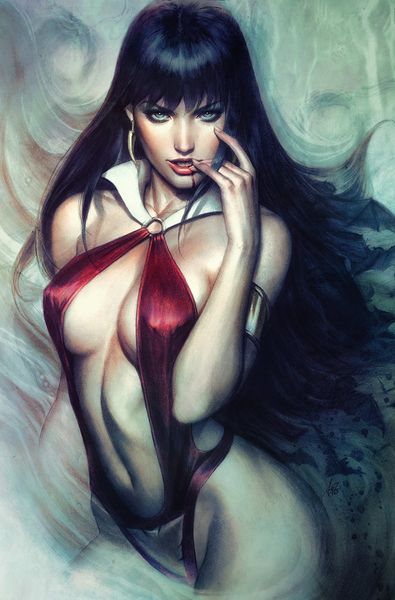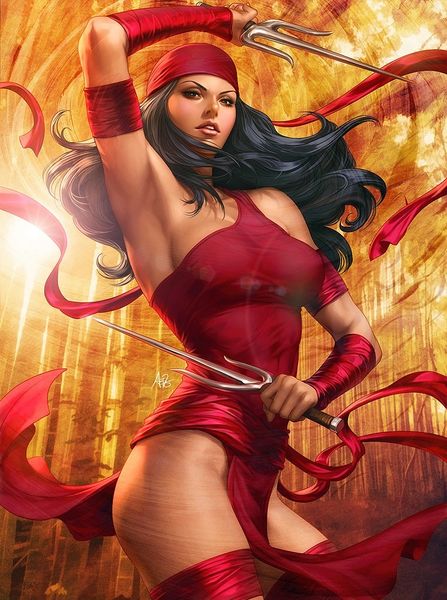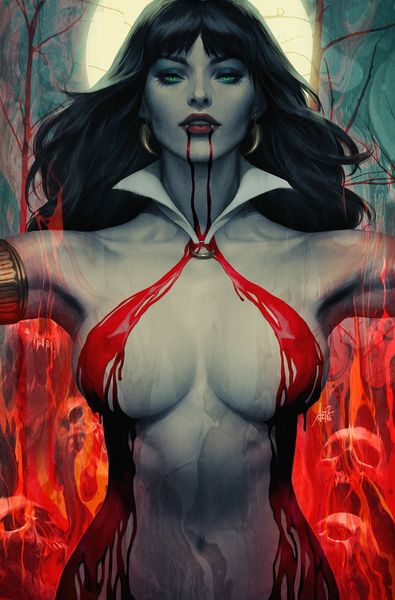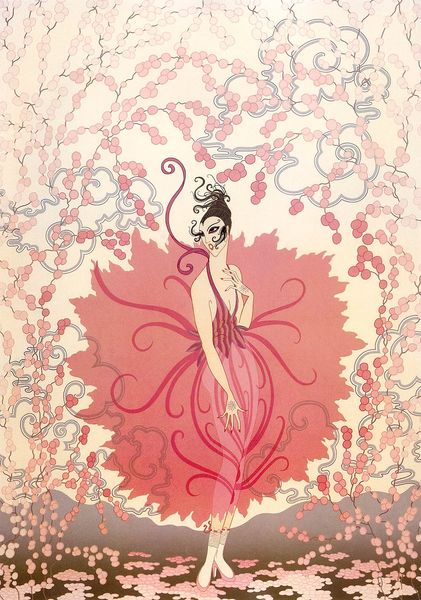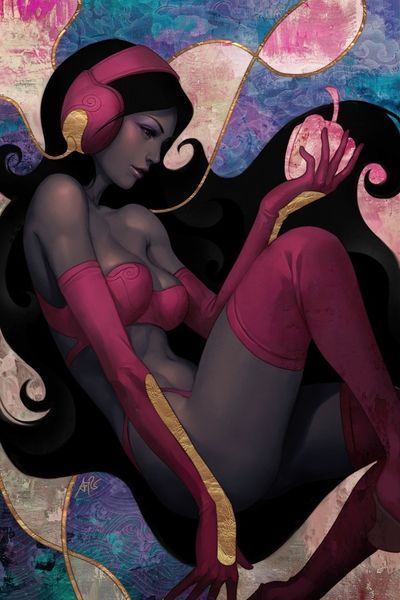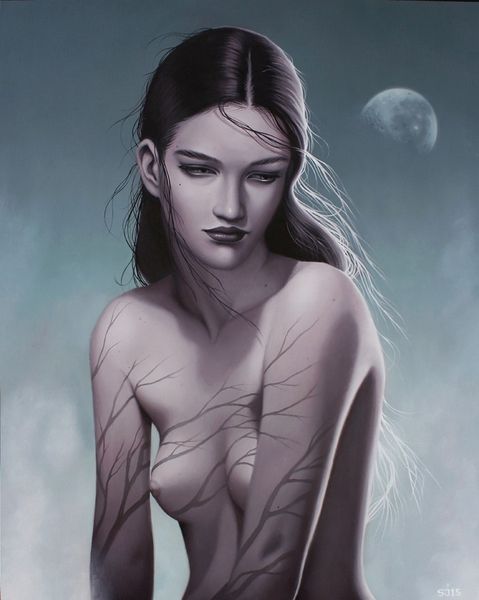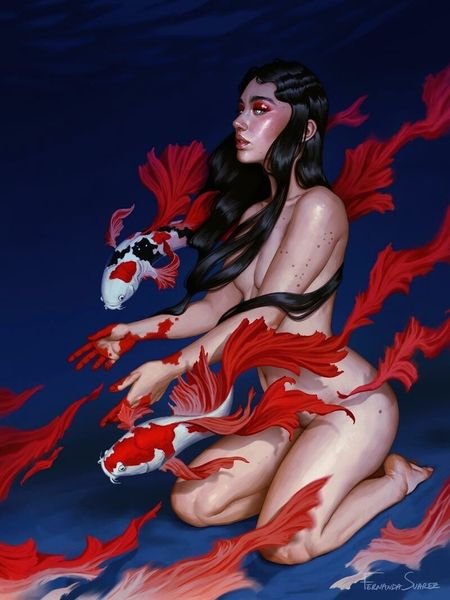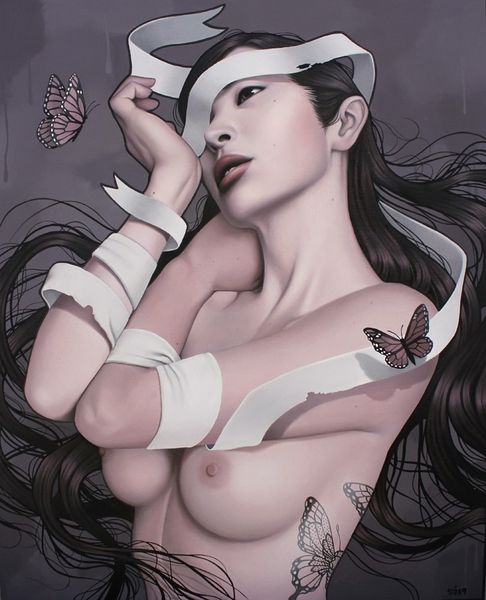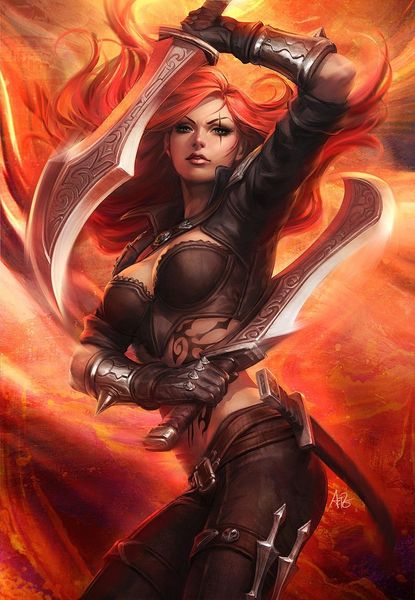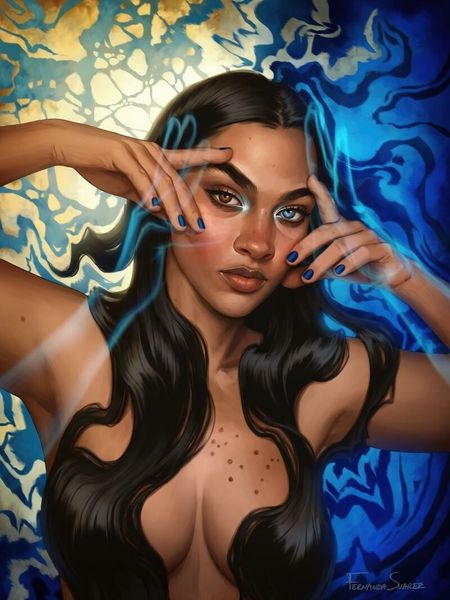
acrylic-paint
#
fantasy art
#
fantasy illustration
#
concept art gaming
#
acrylic-paint
#
figuration
#
orientalism
#
erotic-art
Copyright: Modern Artists: Artvee
Curator: Stanley Artgerm Lau, also known as Artgerm, presents a captivating piece titled "Habibi Turkish Dancer," using what appears to be acrylic paint to realize his vision. What are your initial impressions? Editor: It's arresting, visually. That monochromatic, vibrant red commands attention. The swirling composition almost gives the impression of her spinning right before our eyes. Curator: Lau’s art is rooted in pop culture; therefore, the orientalist undertones immediately invite analysis through a postcolonial lens. Do we interpret this through the artist’s personal gaze, the reception by Western audiences, or the implications for representation of Middle Eastern women? It all holds so much weight. Editor: Precisely! This piece is not an innocent depiction, as orientalism has deep historical roots. However, as fantasy art and fantasy illustration, the gaming world is quite far from high-end museums and academia. The social implications vary across such cultural landscapes. I would point to how public engagement differs when encountering it in those differing contexts. Curator: It begs us to confront not just representation but also its intersection with commodification within contemporary digital art landscapes. And what roles do institutions play, in legitimizing or critiquing these narratives? Editor: Well, that is where galleries have the space and power to shape dialogues, offering both the art itself, and a clear reading to engage with audiences critically about its political message. That space of presentation itself speaks volumes. The artist creates but cannot control the ultimate discussion. Curator: Absolutely. "Habibi Turkish Dancer," presented on the gallery wall, then morphs from mere digital spectacle into a conversation starter. And I appreciate how Artgerm leverages both traditional acrylic and modern digital techniques—reflecting perhaps our increasingly complex and mediated perceptions of culture and identity. It really comes alive as a discussion on gender politics. Editor: It serves as a microcosm of these historical tensions within the larger art ecosystem, prompting much-needed self-reflection, if anything. Thank you, this gave a new, urgent perspective on imagery, which always risks objectification, depending on how we are willing to receive and frame it. Curator: Agreed. It underscores the power and the responsibility we have in shaping not only our art but our very understanding of each other.
